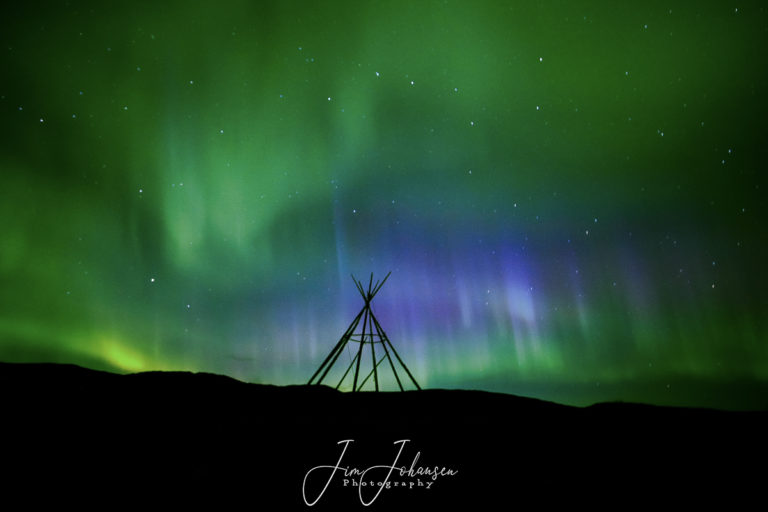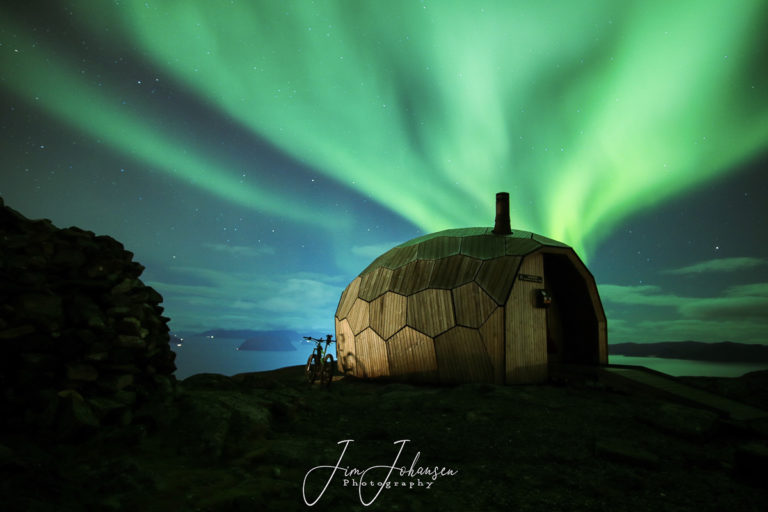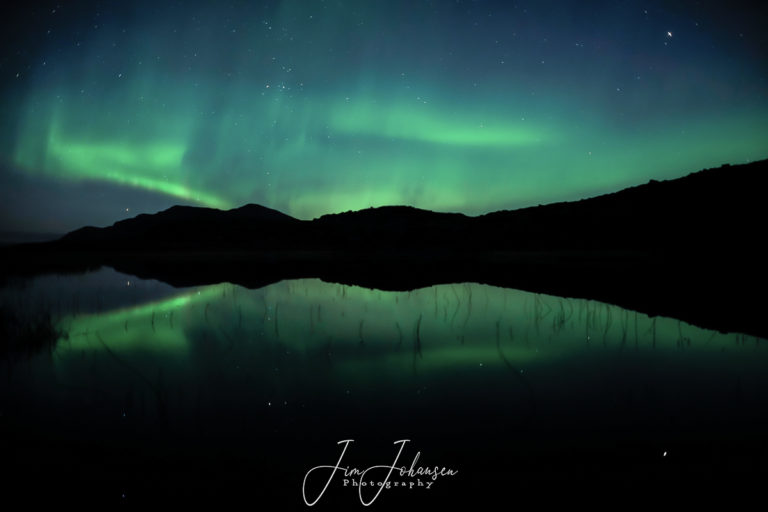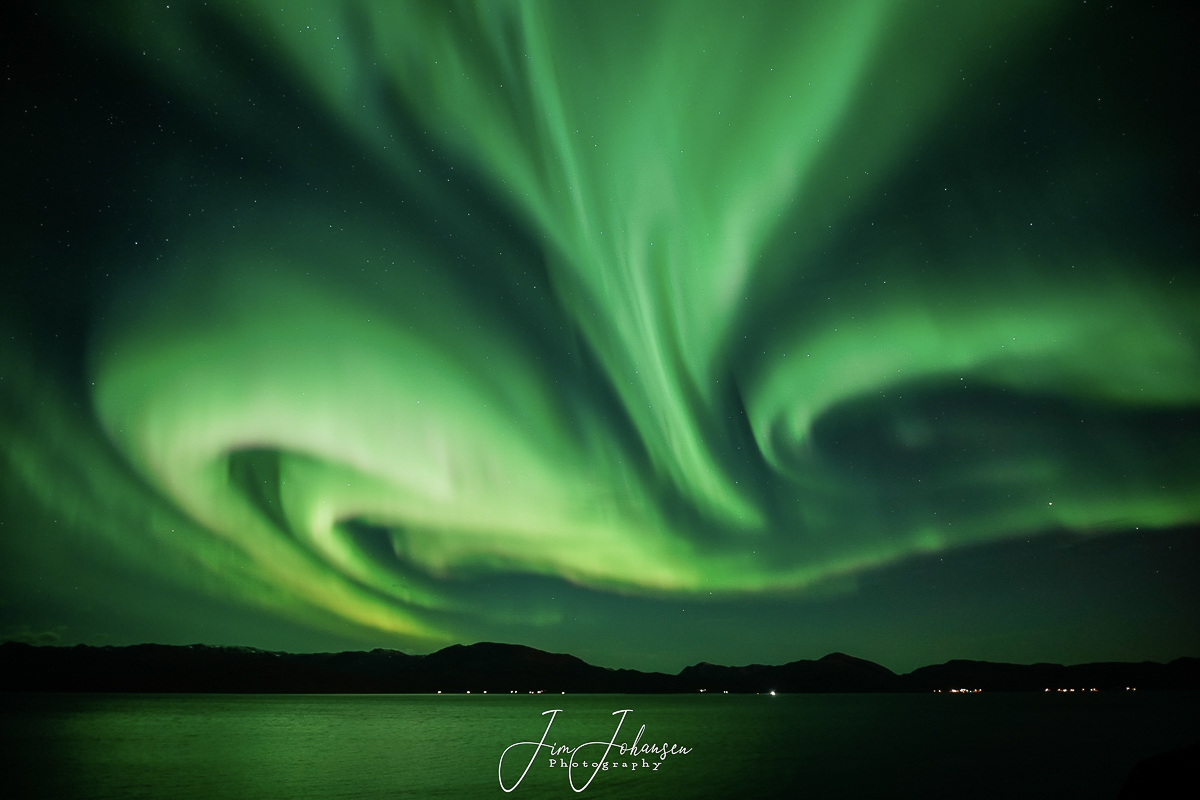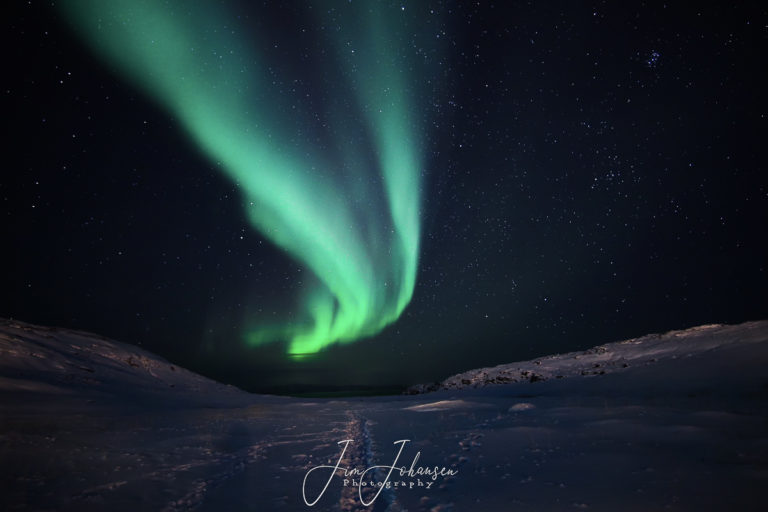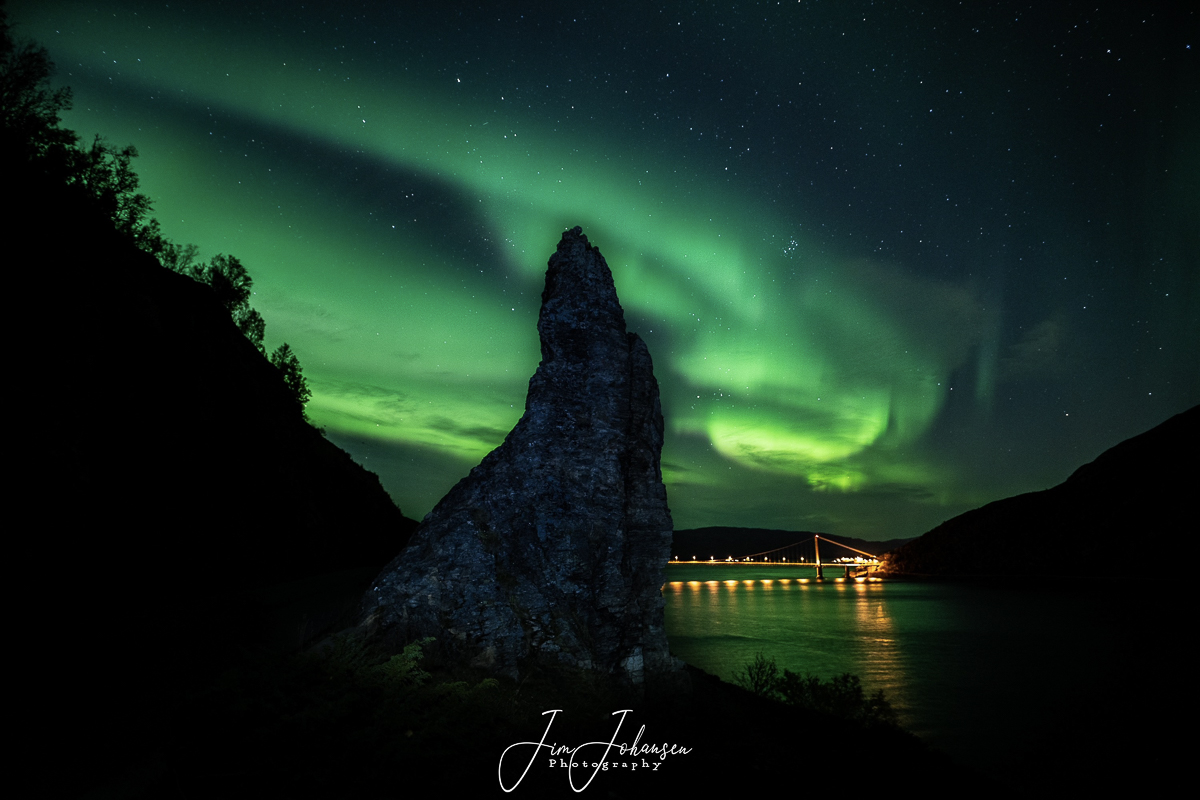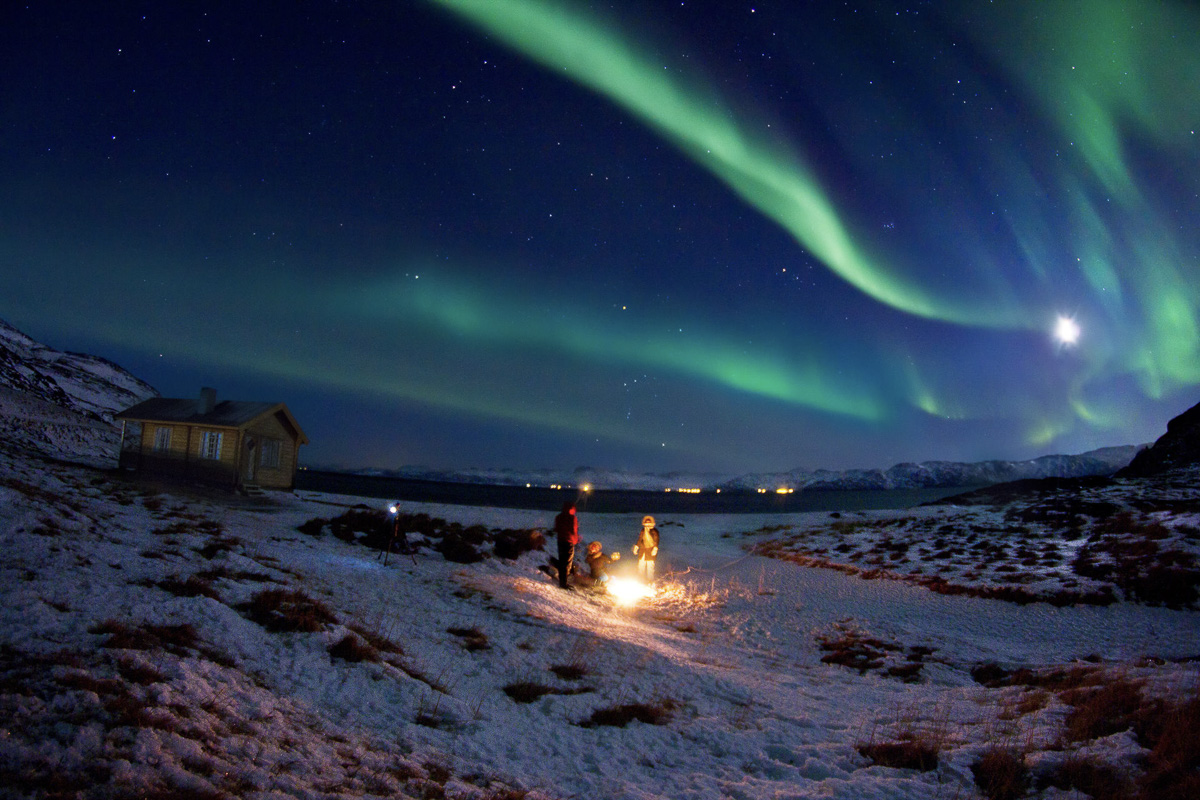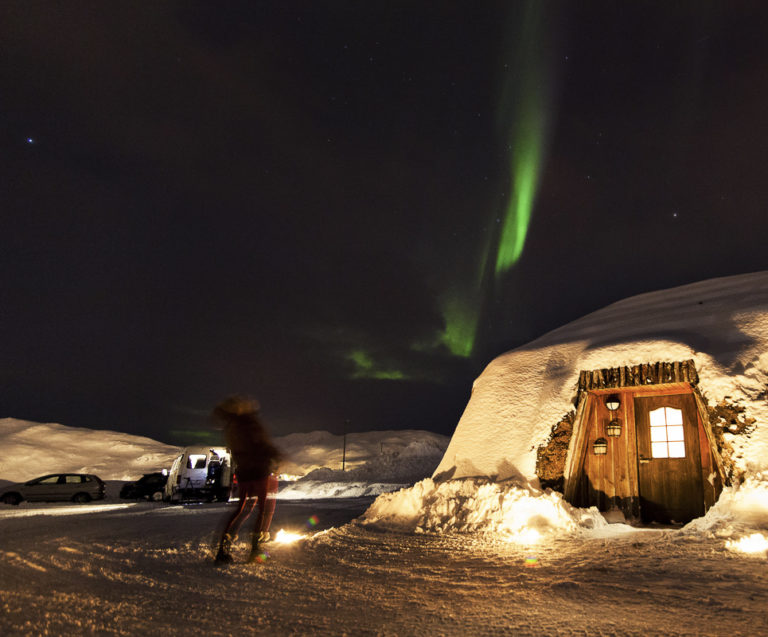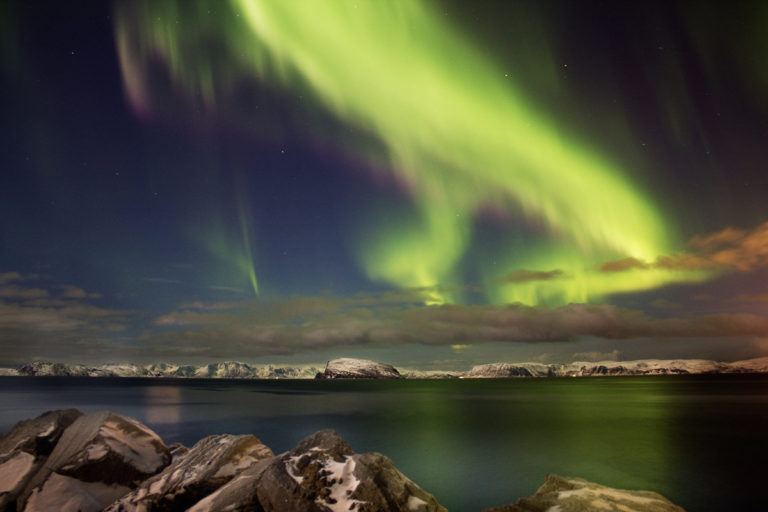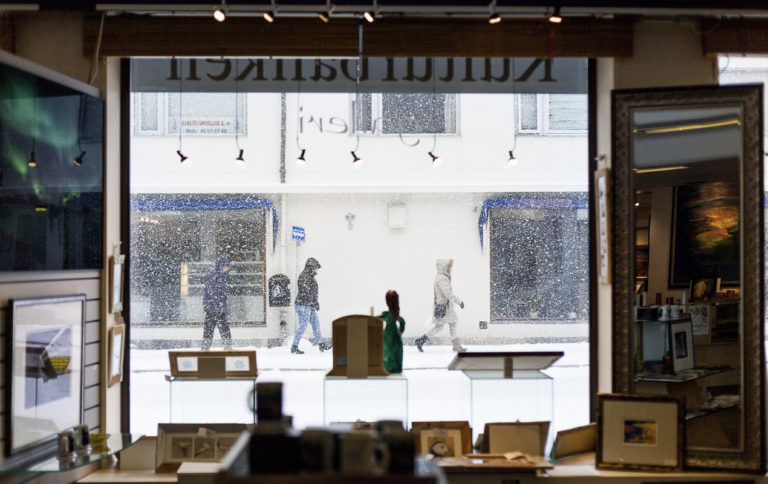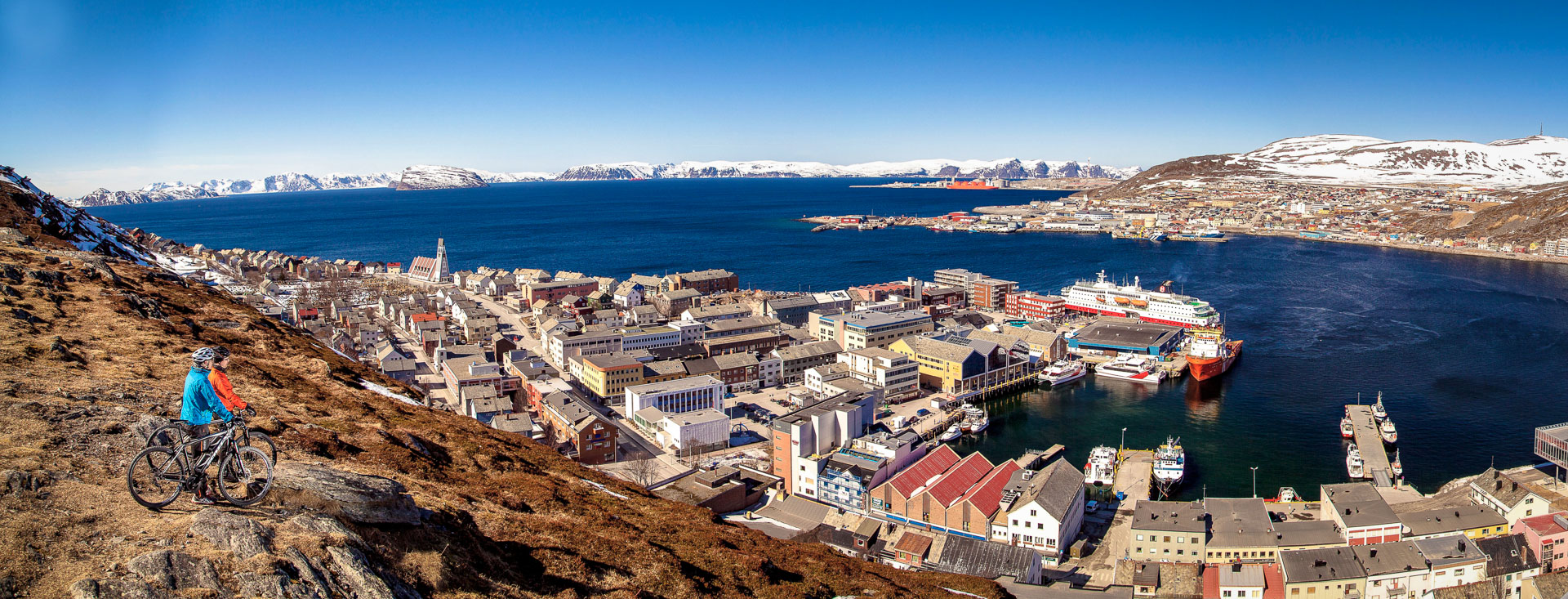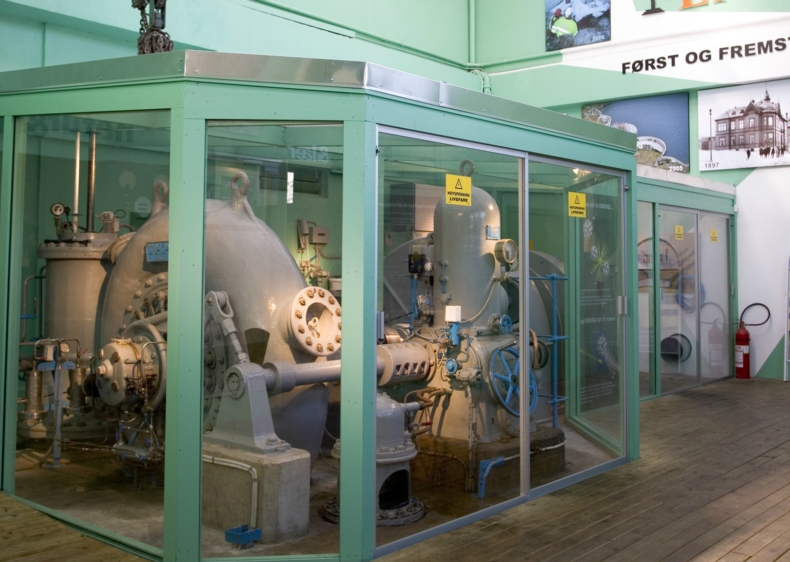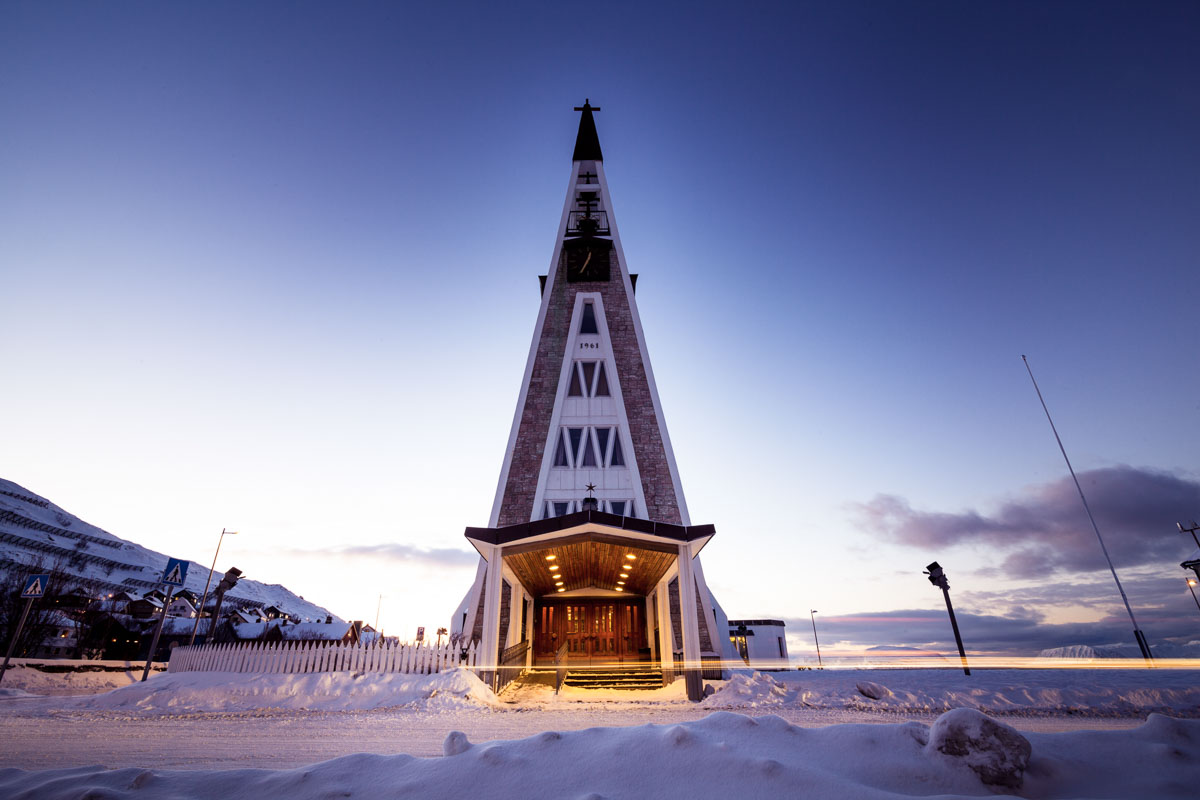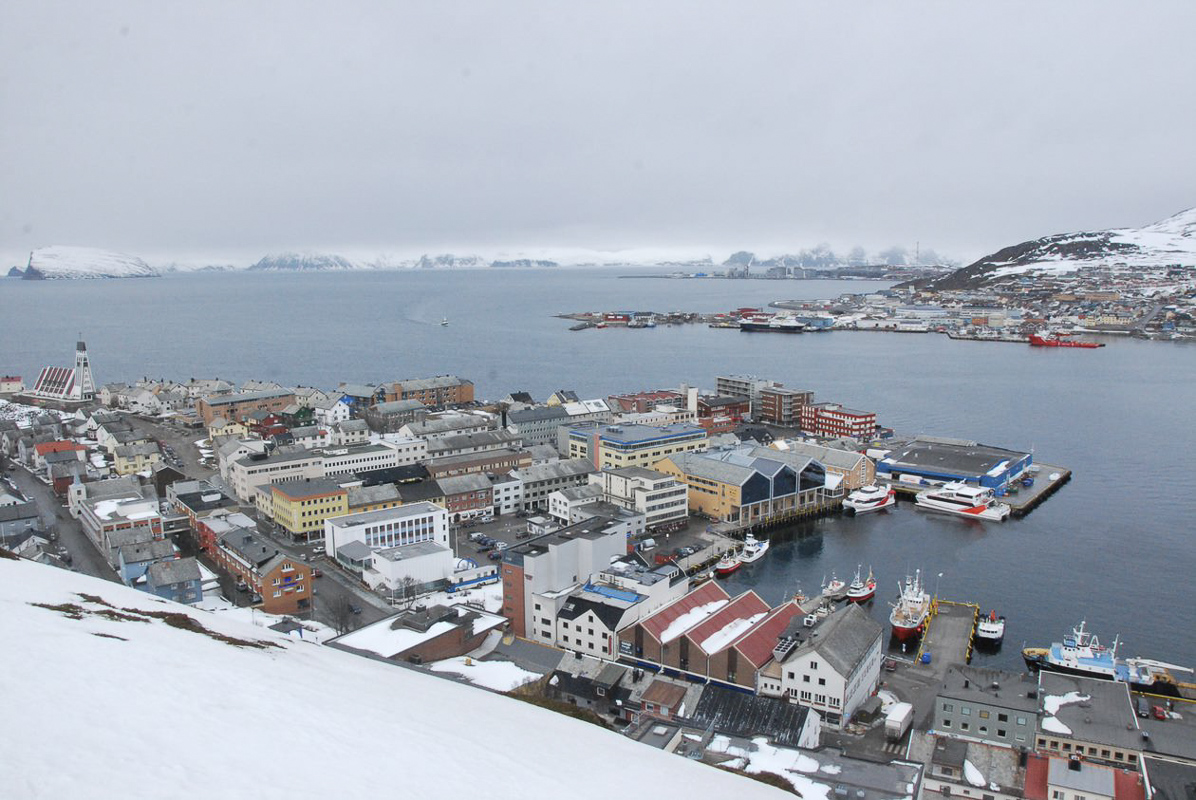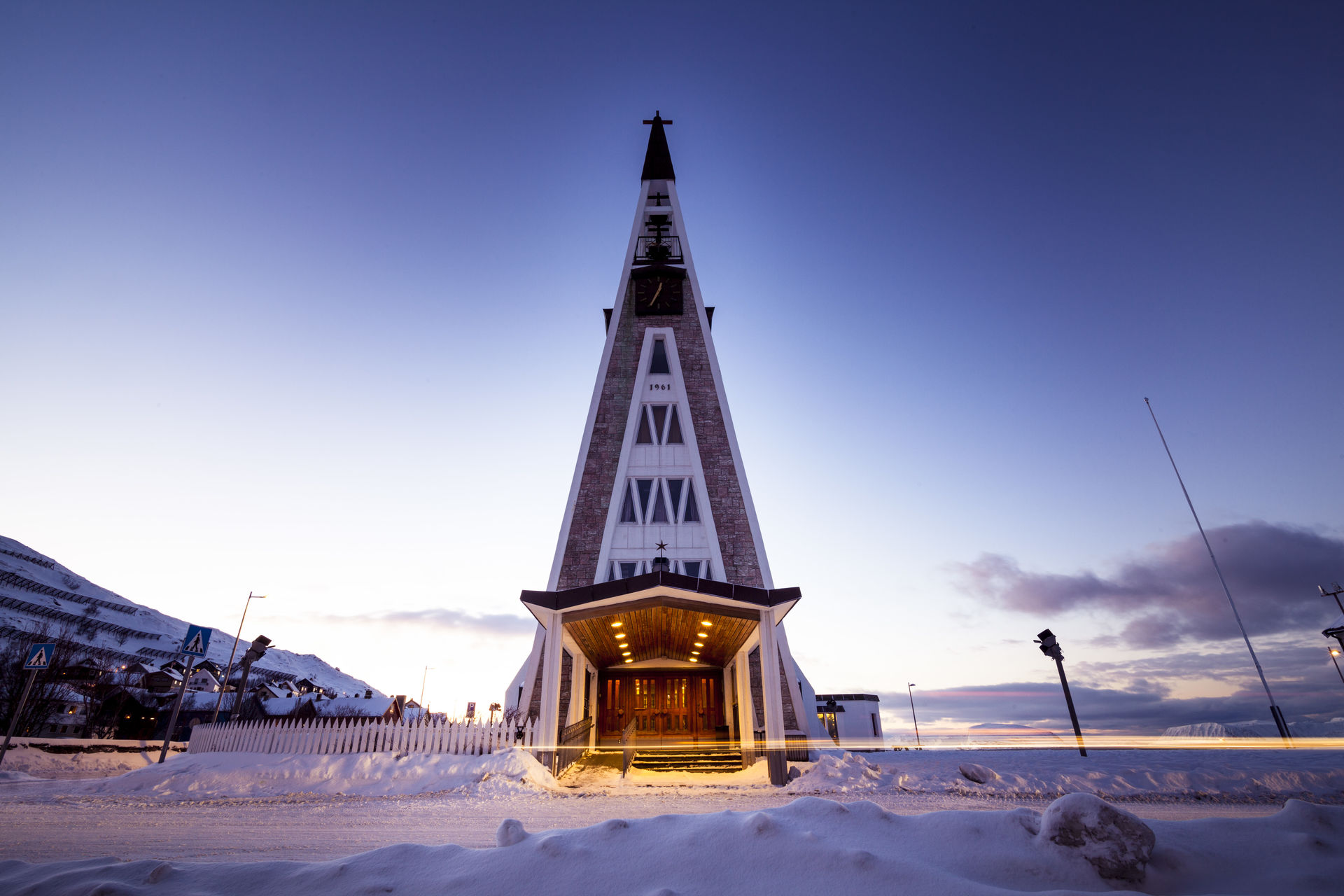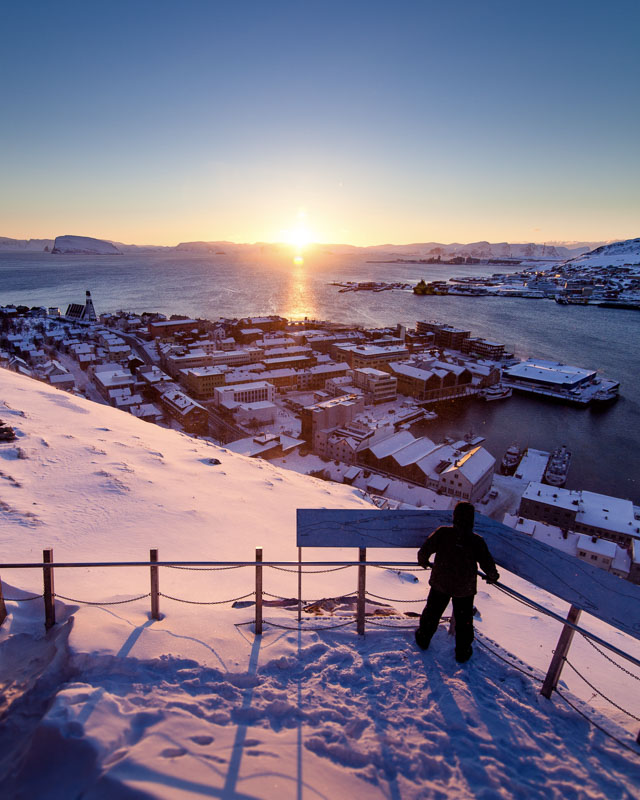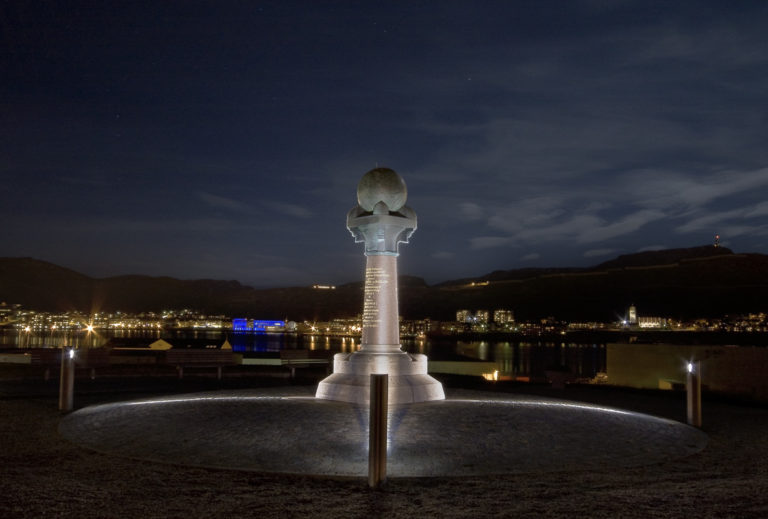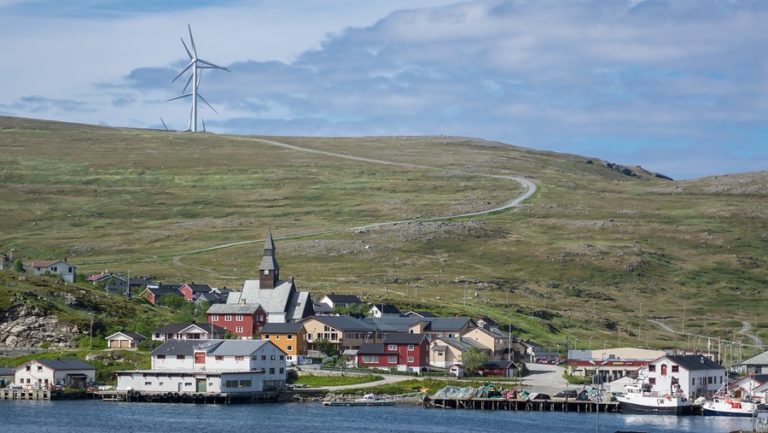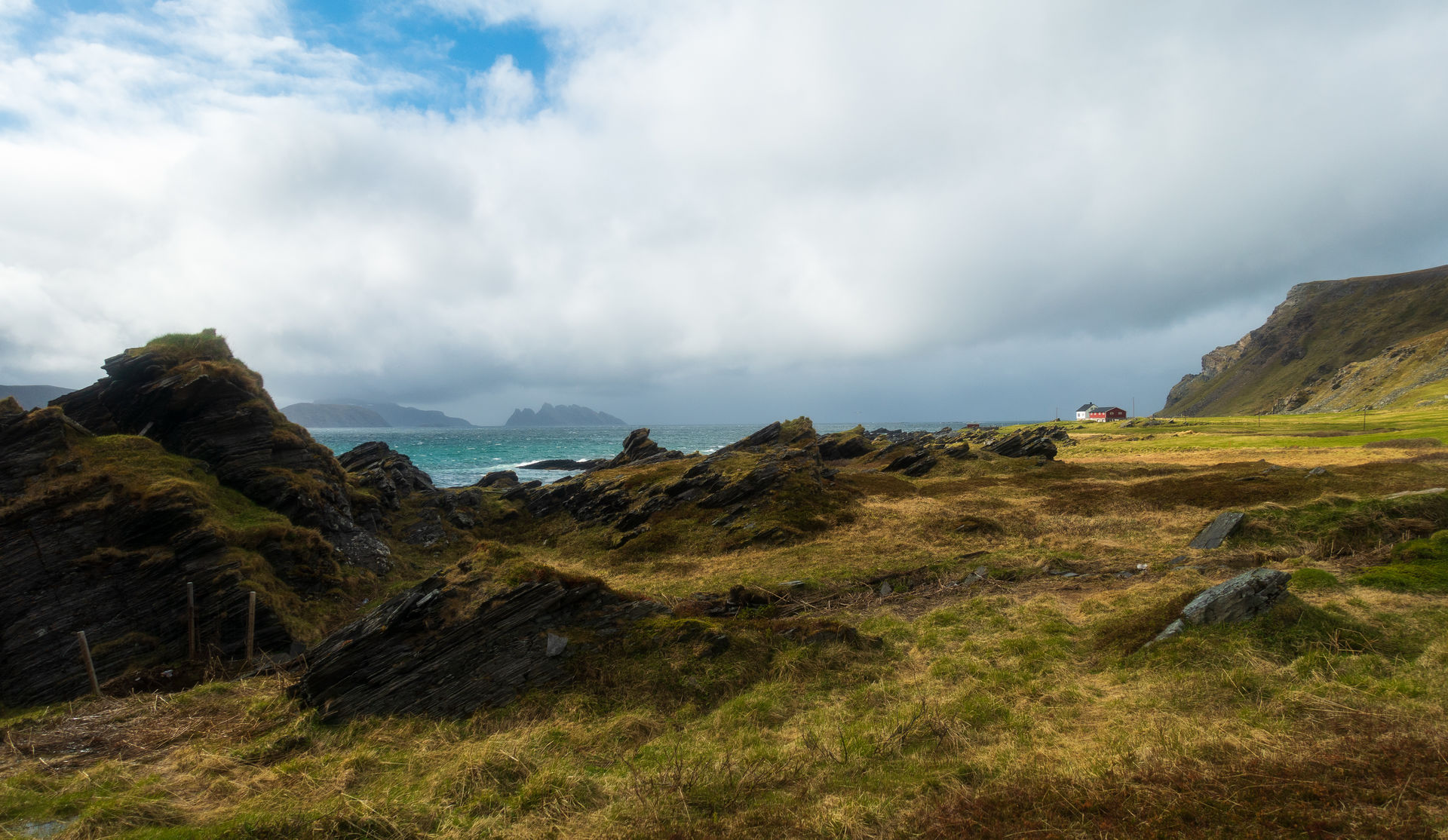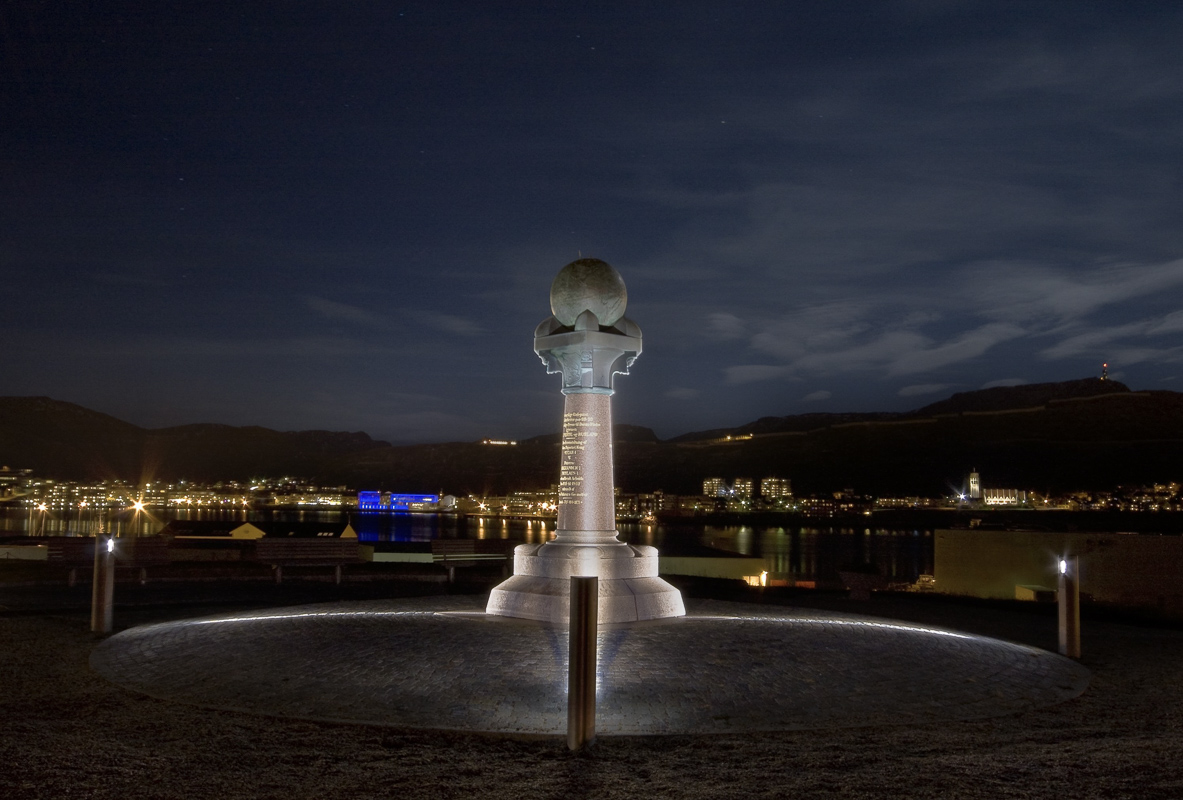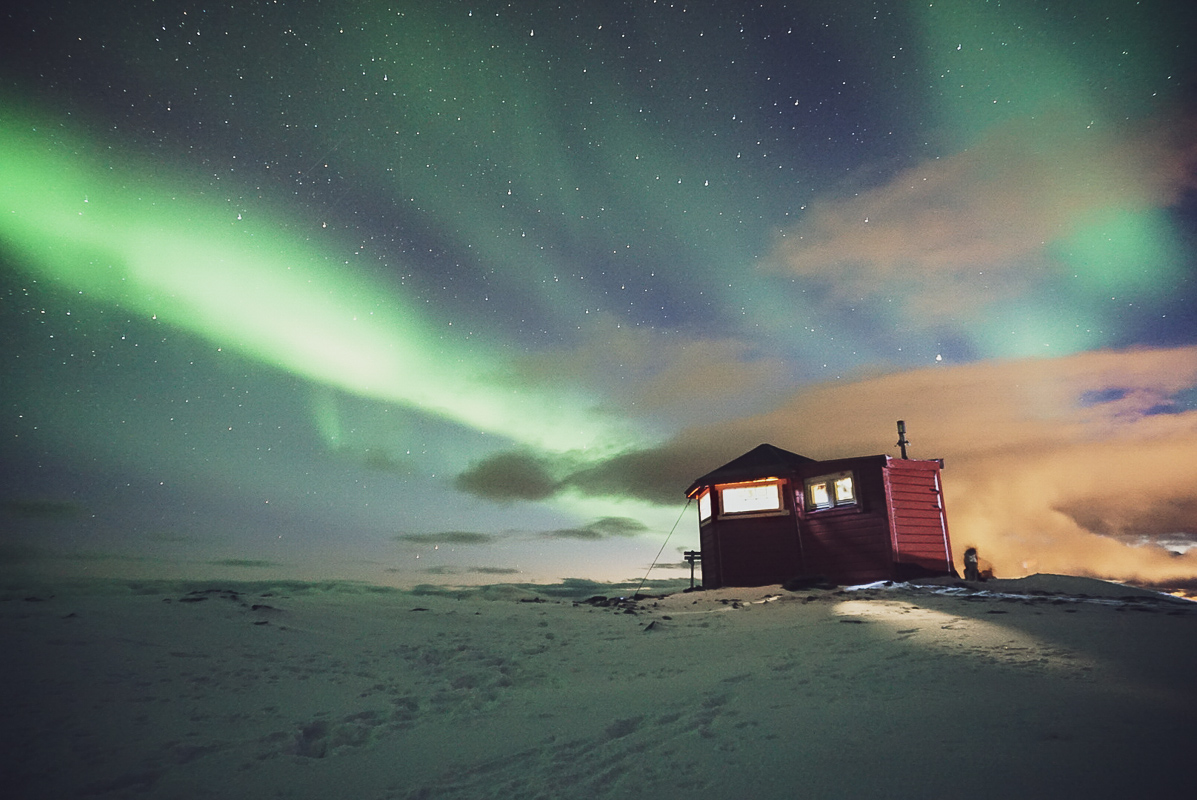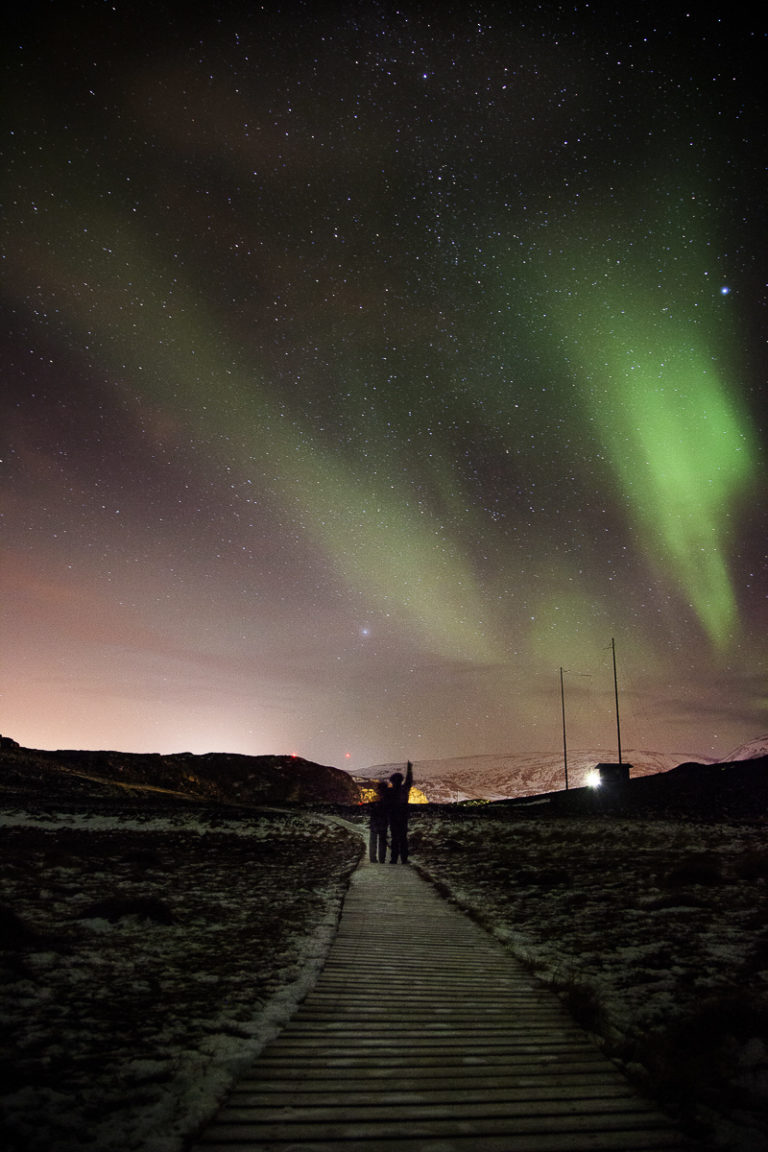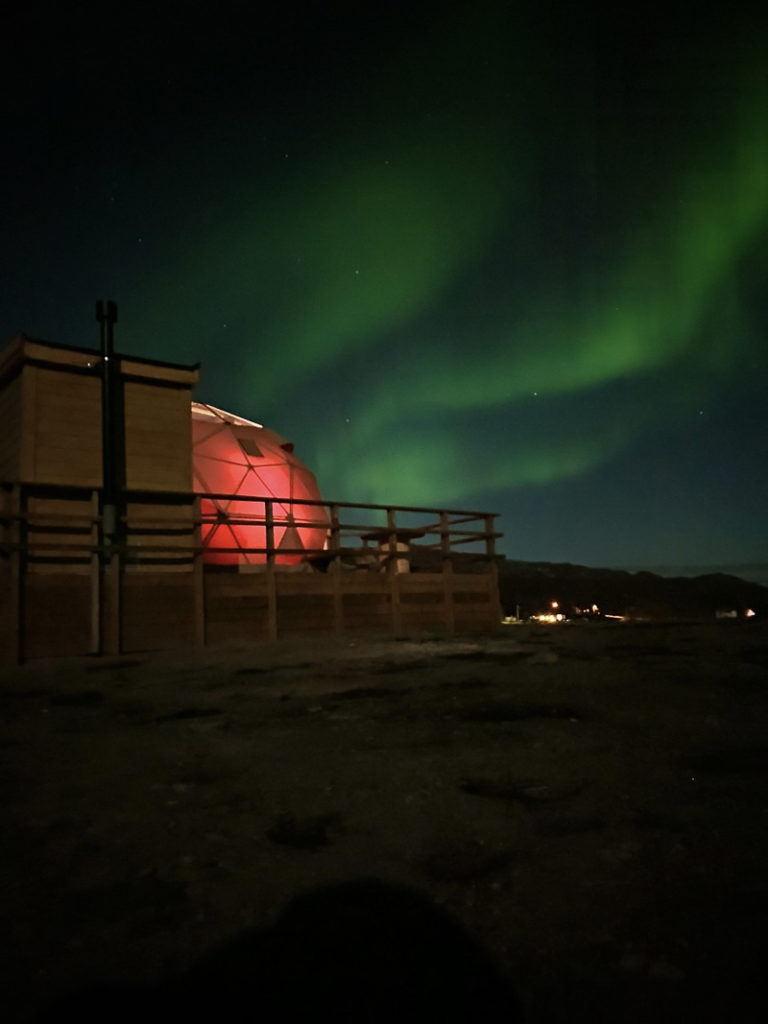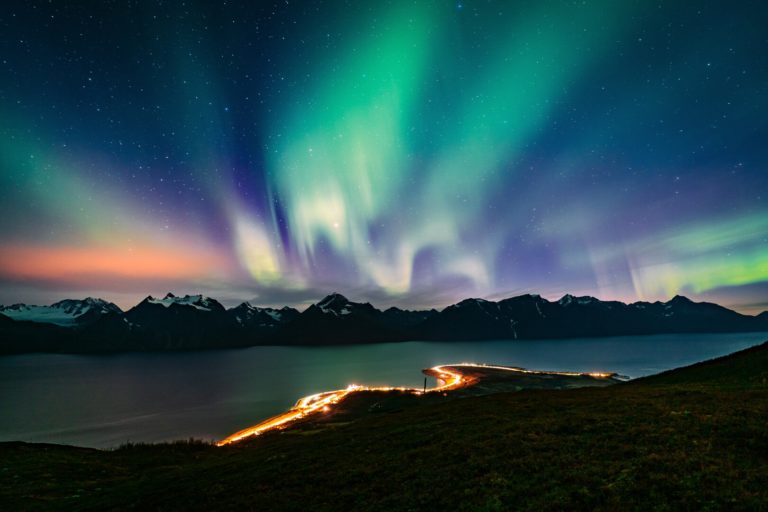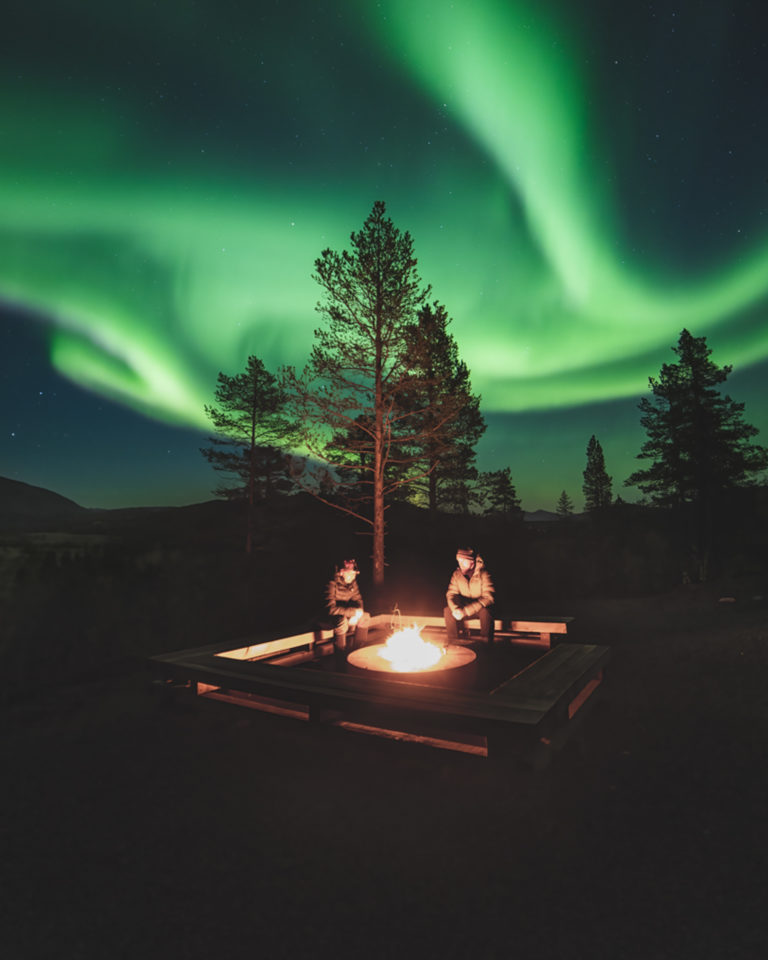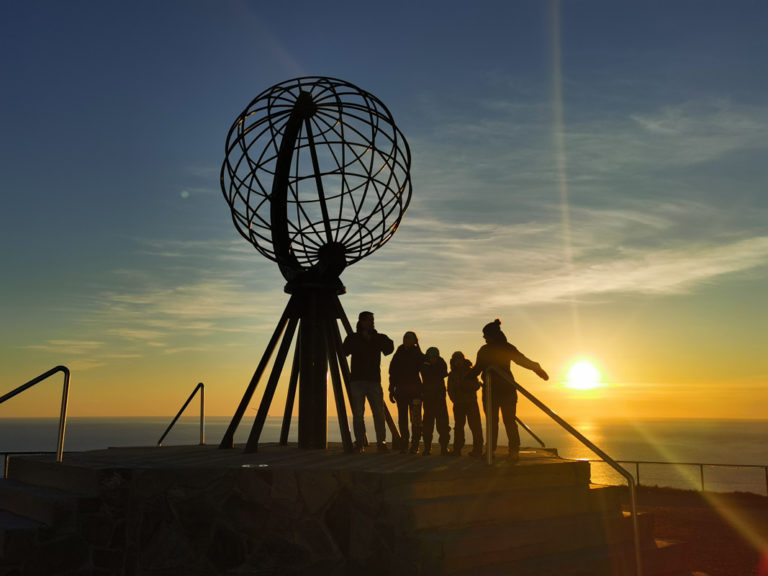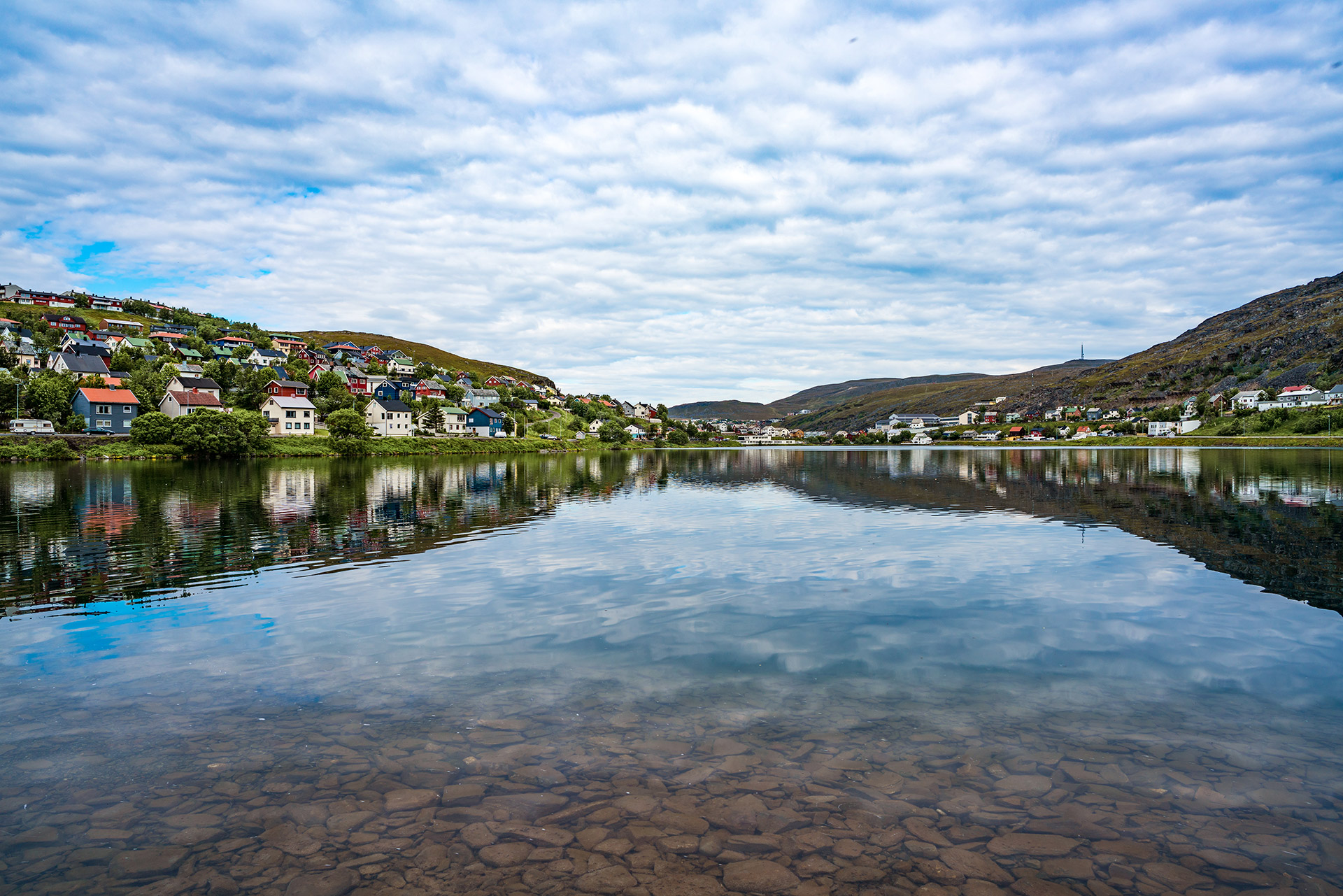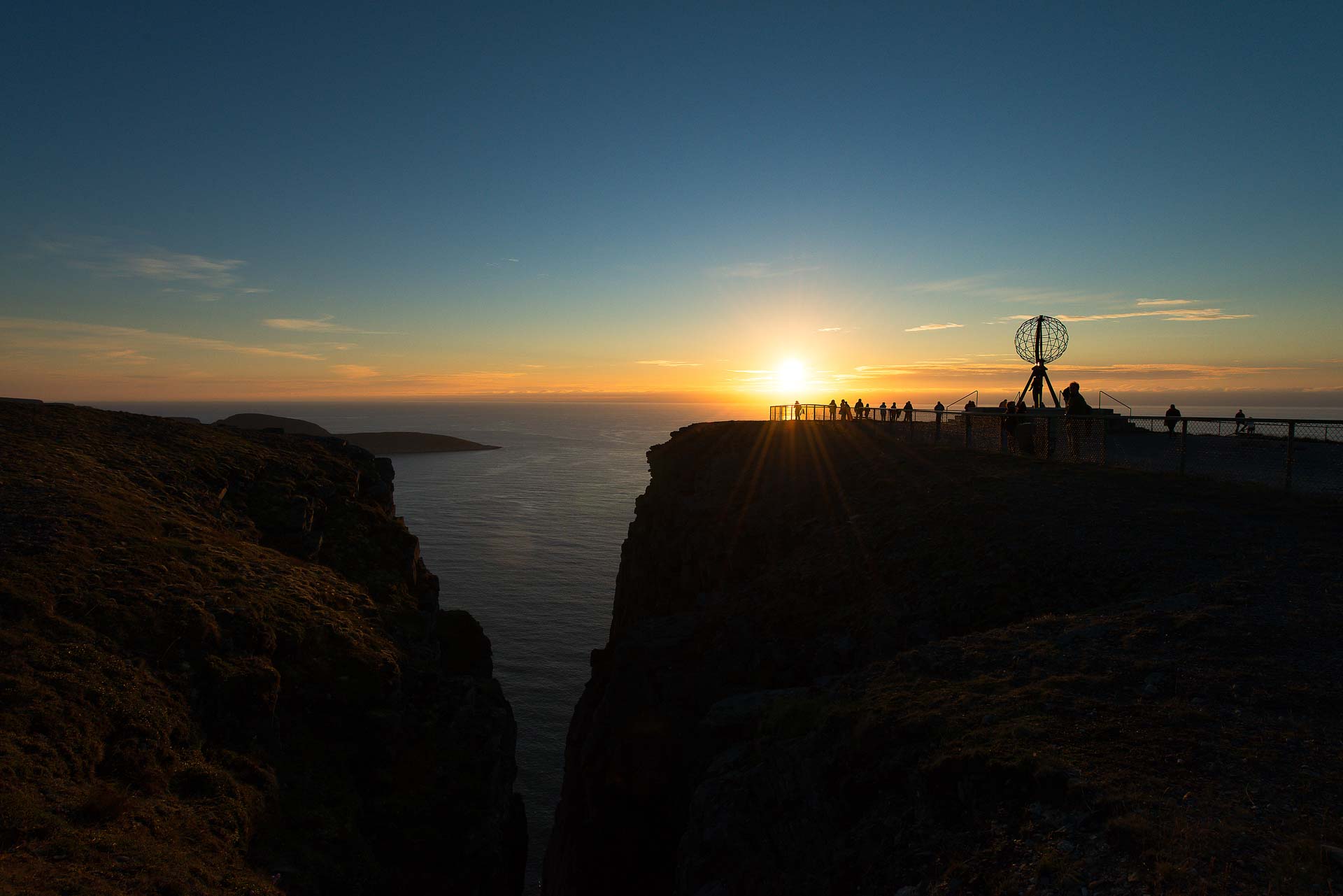Hammerfest, well beyond the 70th parallel, is a micro-metrolpole in the Arctic. Dense, urban and with a great history, it is found smack in a windswept, Arctic coastal landscape. Few visitors come here in the winter, despite being an excellent place to look for the Northern Lights. This means you can come here for a holiday off the beaten track. Yet it is safe, comfortable and sociable.
Hammerfest is right under the Northern Lights oval
Along with the entire coast from Lofoten to the North Cape, as well as locations in Iceland and North America, Hammerfest is found directly under the Northern Lights oval. This means that no place on the planet has more Northern Lights than Hammerfest. Thus Hammerfest is a prime observation point. We asked Jim Johansen, who is an eager amateur photographer for some advice on where to go, and our recommendations are based on his extensive experiences.
Hammerfest has few Northern Lights tourists
More often than not, Hammerfest is ignored as a winter destination. This means you can discover an Arctic little city, a tight-knit community with a dramatic history under the Northern Lights on your own. Northern Lights photographers have the chance to get original Northern Lights photos that haven’t been seen a lot on Instagram. It is also easy to combine Hammerfest with vastly different, yet geographically close destinations such as Alta and the North Cape.
See the Northern Lights by foot in Hammerfest downtown
Some of us like to wander. Fold a little city map into your pocket and look at it occasionally. Then wander around with your camera. In the yellow light from the streetlamps, the reconstruction era houses from the 1950’ies, the monumental culture house, the triangular church steeple and the numerous glances down alleyways to the curved bay provide ample opportunities for night photography motifs. Of course, all these lights could outshine that fabulous Northern Lights photo. However, there are plenty of dark corners, both in residential areas and along the docks where anyone with a fair insight into night photography should be able to take highly original photos.
The city mountain Salen has the quintessential Hammerfest view
Salen (“the saddle”) is the city mountain, but as mountains go, it’s rather easy to climb. A zigzag path should take you up in some ten minutes. From the top, there is a wide view of the city along the curved bay, out on the waters of the Sørøysundet passage, with the island of Håja (“high island”) in the middle, and the remote coasts of the big island of Sørøya afar. Here you are high enough above the city lights to photograph the lights well, at least if you’re reasonably familiar with night photography. The path is usually no problem, but snowdrifts or extreme iciness can make the easy walk very dangerous, Jim warns us. Ask around about the conditions and take a 40-minute detour around the mountain and attack from the other side if too icy. Or ..take a taxi.
The Meridian column affords views of the city over the water
Another viewpoint of interest could be the Fugleneset point, a 20 minutes’ walk around the bay. The rather modest memorial is on the UNESCO world heritage list, along with several triangulation points in 10 countries. It was raised in memory of the monumental task of measuring up the exact size and shape of the globe more than a century and a half ago. From here, the view to the city centre is impressive, and you also see the waterways and coasts around. Or you could try to capture aurora over the memorial.
The Forsølfjellet mountain pass is the darkest area in town
At the very edge of the built-up area, above the residential area nick-named “Prærien” (“The Prairie”), the road rises to the mountain pass leading to the nearby village of Forsøl. At its highest point there is a commanding view over the curved bay, the city and the Sørøysundet waterway. As you are somewhat distant from the city, there is plenty of darkness around, and light pollution is limited. The bus to Forsøl can stop at the top upon request, and have it pick you up on the way to town by waving.
The Bygderuta takes you to remote corners
You can also take the Bygderuta boat ride out to the minuscule communities on the island of Sørøya. The inventive go out in the morning to Akkarfjord, spend the whole day out, maybe with a little warm-up stop at the local store/café, and go back to Hammerfest in the evening. It is endlessly easier just to join the boat for a round trip in the evening. You can go out on the aft deck and look for the Northern Lights, and then go in for a coffee in a plastic cup from the automat. On a clear night, you can see the white winter landscapes rise from the black sea, and you can see how the boat calls at small settlements around the shoreline.
Go to Storfjellet for wider views
A hike that many people can do with normal winter gear, is the hike up to Mount Storfjellet, at 328 metres. You go up from the airport area, follow the downhill ski track and arrive at a dome-like, architecturally accomplished shelter. Here you can sit inside if it’s very windy. Also, locals use the track up as an evening work-out, so on a clear night, you’re not alone. The views are fantastic, and if there is any Northern Lights in any direction, you will not miss it.
Photographs like a pro?
Mount Tyven has the most commanding view
More demanding, but also so much worth it, it the trek up to Mount Tyven. Named “The Thief”, because it steals the sun in winter, it is a longer trek taking you up from the city centre into empty wilderness. You need snowshoes under most conditions, and you should have the Tourist Information explain the route in detail. However, the view is commanding, Hammerfest is but a small cluster of lights in a landscape of white mountains and pitch-black ocean. Only the ships heading to the oil base at Melkøya punctuate the darkness out there. This trek is reserved for people with outdoor experience in winter.
Forsøl has unobstructed seaview
If you cross the mountain pass north of Hammerfest, you reach the little settlement of Forsøl. Forsøl enjoys a location with unobstructed seaviews in the north. Jim recommends us to go to the Kirkegårdsbukta bay for good views. Forsøl is easy to reach by bus, and provided you have good clothes, you can move about and take photos while waiting for the lights.
If the weather is bad, go inland
There is no hiding that Hammerfest’s position on the coast gives it entertaining weather. Polar lows burst in from the Arctic Ocean without warning, lows laden with snow clouds cross over from Greenland and even in the middle of winter, rain weathers follow the Gulf Stream, making snow slide off roofs in town. Then there will be no Northern Lights, and you might want to go Northern Lights chasing out of town. Then it’s good to know that a rental car could take you to much drier and more protected locations inland.
Kvalsund is more than its iconic bridge
On the other side of the Kvaløya Island from Hammerfest, the community of Kvalsund is found. The Kvalsund suspension bridge is the icon of the area, but Northern Lights chasers should go beyond the bridge and head up to the Kvalsunddalen Valley. This is a deep canyon like valley with few lights and a river that is partly frozen in winter. If you’re not up to hiking, you can hang around at the end of the road. The sportier among us can follow the snowmobile tracks to Lake Nevervannet, and even carry on to the nearby mountains, provided you have snowshoes.
Skaidi is the gateway to the high plains
Under difficult conditions, one should head inland as far as possible, as most of the clouds hang around the coastal range. Skaidi is where the road to Hammerfest diverts from the main road of E6 through Northern Norway. Here, a hotel and restaurant are located, and there are ski and snowmobile tracks leading out to the numerous second homes found here. This is where Hammerfestians go to relax, to ski and do ice fishing. It is both easy and safe to move about in the flattish landscape. If you’re cold, you can have hot chocolate in the café and go out again. With your own car, you can also drive south along the E6 to the little Sami chapel at Áisaroaivi. This modest chapel is found smack in the middle of nowhere and is a photographers delight.
Go and find your own secret Northern Lights places
If you’re of the inventive kind, you can find your own ways. There is a short ferry crossing to the big island of Seiland, just south of Hammerfest. Only a handful of people live along the shoreline of the northern coast of this island, it is dark and still a few lights to help you set the camera. From Kvalsund, a narrow country road takes you to small locations like Neverfjord. Here there are small settlements, and on the other side, the impressive mountains on Seiland Island loom.
Hammerfest is the oldest city in the north
In 1789, Hammerfest, then a small hamlet with a church on the coast, was issued its city charter. This was part of an effort to promote economic activity in the most remote reaches of the Dano-Norwegian kingdom. There were quite a few hick-ups to begin with, notably the total destruction of Hammerfest after a British raid on 1809, part of the blockade of Norway by the Royal Navy.
The first electric streetlamps were lit in Hammerfest
In 1820, the Hammerfestians sent their first hunting expedition to the Bear Island, hunting walrus. Daring hunting expeditions to the remotest areas of the Arctic ocean became an annual event, making Hammerfest a thriving little trade centre. Following the city fire in 1890, Hammerfest became the first city in Europe to have electric streetlights. To learn about the history of Hammerfest, one should head to the Royal and Ancient Polar Bear Club, which has exhibits on the rich history of the city. In the Energy House, the tale of the first electric lights is told.
Is Hammerfest the world’s northernmost city?
Hammerfest proudly calls itself the world’s northernmost city. All locations further north are smaller than Hammerfest’s population of 10 000 people, and they all lack the history and flair of Hammerfest. However, the title “city” is no longer a protected one. There is no law stopping the 2600 people of Honningsvåg (near the North Cape) to call themselves a city. This they have done, possibly to spite their neighbours a bit. The 4200 people of Utqiaġvik (formerly Barrow) in Alaska, are also undoubtedly a bit further north. Well, it all has to do with the definition, we suppose.
The Museum of Reconstruction tells a moving tale
In late 1944, old Hammerfest came to its end. The occupying German forces evacuated the whole of the far north of Norway as the Red Army pushed into Finnmark from the east. Nothing was supposed to be left to the Allied enemies, and people had to leave their homes. What couldn’t be carried in a suitcase, was lost. By December 1944, the snow covered the smoking ruins of Hammerfest, and hardly anything suggested that there had once been a city here. The Museum of Reconstruction in Hammerfest is the national museum of the entire history of this important chapter of Norway’s war history and talks about all sides of the destruction. This is a museum to spend time in, as it gives valuable context to what you see when travelling the far north of Norway.
Reconstruction was a national undertaking
An important aspect of the Museum is the reconstruction era, starting the late 1940’ies. Simple and prosaic in a time of shortages, they are bright and airy with light, modern lines. Hammerfest was an important centre in the lucrative fishing and fish processing, with the giant Findus factory providing job for many.
Go sightseeing in reconstruction-era Hammerfest
The reconstruction era is visible everywhere in Hammerfest. The city hall, where you can join the Polar Bear Club, is one example. The 1961 church has a modernist, triangular shaped steeple, yet the interior is colourful and warm. The small St. Michael’s church is an outpost of the Roman Catholic church. The residential areas around the church are full of cube-shaped houses in strong colours, and in winter they make excellent photo motives in the white snow. A marked contrast is the new culture house, built on the grounds of the former Findus fish factory, bringing the 21st century to town.
The city centre is still alive
Norwegian city centres tend to get more anaemic, as shopping malls sprout up in suburbia. Hammerfest has wisely avoided this, and instead heats up its city pavements with cooling water from the nearby gas refinery. This means you can walk the streets, window shop and nod to the locals, the way we do less and less at home these days. Have your coffee at Nr. 19, listen to the locals chitchatting around the tables and maybe buy some locally roasted coffee. The “Håndverkshuset Vi-4” (“the 4ofus craft house”) is where you can study the local craft scene, anything from knitted socks which we all need to paintings. Have someone translate the fun ceramic signs on sale for you, they show the local sense of humour.
Eat where the locals eat, drink where the locals drink
There is nothing touristy anywhere in Hammerfest, everywhere the locals are the vast majority. Which is a good thing, because Hammerfestians are talkative, friendly, and tend to laugh a lot. Lunches are a sociable thing in Hammerfest, and locals meet to chat and eat (in that order) at Brygga Mathus for some smoked reindeer burger or locally sources fish and chips. The lunch buffet at SOMA is meant to be shared. In the evening, if you’ve been for a long Northern Lights walk, “Kaikanten” (Dockside edge) is a pub popular with locals, complete with pub grub, a pool table and the ever-looming danger of sing-alongs. For eating in style, one goes to Du verden or Skansen. Niri Sushi is the local interpretation, with raw fish right from the sea nearby.
Hammerfest is the world’s northernmost city. Maybe.
Keep active at daytime
Again, Hammerfest is decidedly untouristy. Organised outdoor activities are few and far between. This gives you a chance to do things the local way. The cross-country ski route to the Glimmevannshytta cabin is a wonderful day out if the weather is nice. Skaidi has downhill skiing. At Seiland Explore in Hønseby you can rent snowshoes, and a small group can even do a guided tour. Kayaking is also possible on request.
Absolute peace and quiet can be had outside Hammerfest
Holidays can be hectic sightseeing and fast, fun-filled activities. However, some of us need a couple of days or a small week away from it all. Maybe we even bring our laptops with us and get to do some office work. Then one can go for a long walk in the evening, to look for the Northern Lights, wrapped up in plenty of layers. If the storms howl, the spectacle can be enjoyed from the comfort of a sofa. The area around Hammerfest is mostly pure nature, the settlements are mere hamlets, and the breathtaking coastal landscapes and the ever changing weather provide ample entertaining for stressed-out people.
Where should you go for absolute peace?
Akkarfjord, the little community of 60-70 people on the island of Sørøya is easy to reach, enjoys the luxury of a small shop that also serves coffee and accommodation such as Sørøya Rorbuer, and Sørøya Gjestestue. Aurora & Midnight Sun Glamping in Kokelv is found near a small settlement north of Hammerfest. The hotel at Skaidi up on the mountain is another option. Seiland Explore on the island of Seiland is found near the impressive Seiland peaks.
Hammerfest is easy to combine with the North Cape and Alta
Travellers tend to have a week’s holiday in winter. One option more people should explore is to combine lively and untouristy Hammerfest with Alta. Alta has a dry, stable climate with lots of Northern Lights options, and plenty of dogsledding, skiing and snowmobiling. A third destination nearby is the North Cape, Nordkapp, that can be reached in winter for a true end of the world-feel. Energetic travellers can easily cross between the three within a week, flying in and out of Alta.
Practical about Hammerfest
Hammerfest is found on the island of Kvaløya, on almost 71 degrees northern latitude, in the county of Troms og Finnmark. The North Cape, Nordkapp, is a three hour drive away.
Hammerfest has a good selection of mid-range and first-class hotels in the city centre. There are also some budget options and a camp site with cabins. Good quality bungalow and holiday homes, some geared at fishing, are found in the small settlements around. Consult the website of Visit Hammerfest for all the details.
Hammerfest can be reached by road, and the Hurtigruten calls at Hammerfest on its way north and south. There is also an airport in Hammerfest, where Widerøe’s propeller planes land. The quickest connections tend to be Oslo-Tromsø-Hammerfest. However, quite a few visitors fly with 737’s to nearby Alta. This way, they can more easily get discount air fares. From Alta, you can take the bus across the Sennalandet mountain plateau to Hammerfest, or take the catamaran, stopping at small hamlets in a breathtaking scenery.
Many people fly, it is just a short hop with Widerøe. The Hurtigruten sails early in the morning from Hammerfest, and arrives around noon in Honningsvåg. From here, you take the bus up to the Cape itself. There is also a daily bus connection.
Hammerfest was issued the city charter in 1789 by royal decree, and it is the northernmost urban settlement in the world with this distinction. However, royal decrees are not that common anymore. Add to this that the distinction between “city” and “town” is blurred in most countries, and you understand that definitions are not absolute. But we recommend you not to question this while in Hammerfest.
Visit Hammerfest, run by the local tourist board, has a wealth of information.

